#3rd millennium BC
Photo
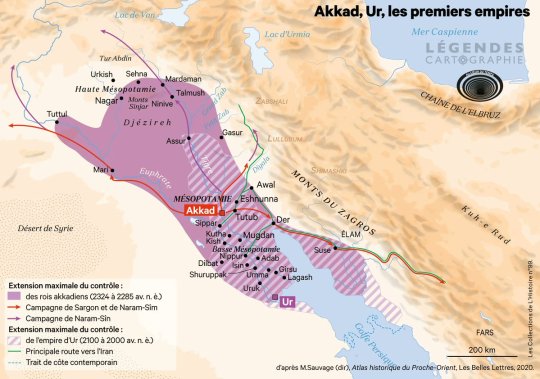
Akkad and Ur, the first empires, 3rd millennium BC.
by LegendesCarto
86 notes
·
View notes
Text
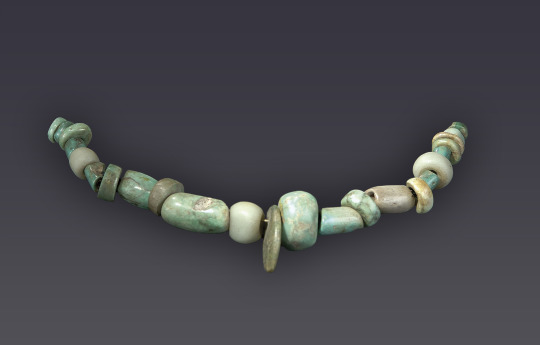
Variscite necklace, Brittany, France, 3rd millennium BC
from The National Archaeological Museum, France
225 notes
·
View notes
Text




If you visit the Sagrada Família basilica in Barcelona (Catalonia), you might be intrigued by these squares with numbers. Like every detail in the building, it has a symbolic meaning.
These are a very particular kind of magic squares. A "magic square" is a series of numbers on a square grid, placed so that any row, column, or diagonal line always adds up to the same number. Well, to be fair, there is one more rule for the normal magic squares which this one doesn't follow: the squares cannot repeat numbers and must use all numbers from 1 to the number of squares possible (for example, a square of 3x3 would have numbers from 1 to 9, a square of 4x4 would have them from 1 to 16, etc). When this rule is followed, the number that results from the addition will always be the same (in a square of 3x3, the sum of 1+2+3+4+5+6+7+8+9 = 45, and each row, column and diagonal line sums 45/3 = 15; in a 4 x 4 magic square, where the sum of all the numbers from 1 to 16 is 136, the magic constant is 136/4 = 34). For mathematical reasons, the resulting number cannot be chosen, it will always be the same one if we follow those rules.
And here is why this one doesn't follow that rule, and it's on purpose. It doesn’t have all the numbers from 1 to 16 (it is missing the 12 and 16) and some numbers are repeated. And why did they do that? Here's the important bit: the result of the sum isn’t 34 (as would always be in a 4x4 magic square), but 33.
The sculptor who created the Sagrada Família's Passion façade (the artist Josep Maria Subirachs, following architect Antoni Gaudí's vision) took a different spin for these squares. Magic squares have been used as talismans in many cultures for millennia, since ancient cultures including 3rd millennium BC China, Ancient India, Ancient Egypt, Arab, and Greek cultures, among others. For the Sagrada Família (a Christian temple), Subirachs used to hide a number of great significance in Christian symbolism.


Painting Melencolia I by Albrecht Dürer (1514) and a detail from it.
Subirachs adapted a magic square from this engraving by Dürer and changed it so that it would add up to 33: the age that Jesus Christ is traditionally believed to have been when he was executed. A number based on the repetition of another of the most important numbers in Christianity: 3, symbolizing the holy trinity.
The square in the Sagrada Família manages to add 33 by repeating some numbers and skipping others. But it also goes further than adding up 33 in every row, column, and diagonal line. The same number can also be obtained with many other combinations. Here are some of them:

Plus, in the magic square at the Sagrada Família, there is also a sort of hidden subliminal signature: adding up the numbers that repeat and looking at their correspondence in the Roman alphabet, we get the initials INRI (Iesus Nazarenus Rex Iudaeorum = "Jesus of Nazareth King of the Jews" in Latin), which was written on the sign at the top of the cross where Jesus was crucified.

This way, mathematics, art history and religious symbolism all come together in this little symbol.
Photos from Alamy, Martin Leicht, Sagrada Família blog. Text adapted from Sagrada Família blog. All the graphs with the numbers are from that same article.
#arts#sagrada família#barcelona#catalunya#arquitectura#josep maria subirachs#magic square#mathematics#maths#math#art history#modernisme#art nouveau#art#architecture#symbols#symbolism#europe#travel#wanderlust
66 notes
·
View notes
Note
Hi this is super random, but you're in archaeology academia circles, so this felt like the best place to ask. I need two chapters for my thesis, but my uni library doesn't have access to it. The chapters are:
The Mobility and Migration Revolution in 3rd Millennium BC Europe -> https://doi.org/10.5871/bacad/9780197267356.003.0003
Bell Beaker Mobility: Marriage, Migration, and Mortality -> https://doi.org/10.5871/bacad/9780197267356.003.0004
If you have access to it, or know someone who does, I would kill for a copy xp Hope you have a great day :D
Unfortunately, I don't have access to an online version of that book, although my university's library does have a physical copy. I can see if anyone here might be able to.
Fwiw, you can also request an Inter Library Loan for specific chapters of books and the librarians will generally scan them and send them to you.
-Reid
48 notes
·
View notes
Photo

The Citadel of Aleppo, Syria : A towering testament to human ingenuity, holds the distinction of being the world’s oldest castle. Dating back an astonishing 5,000 years to the 3rd Millennium BC, it has witnessed the rise and fall of empires, from the Hittites to the Byzantines. Its towering walls and storied history certainly make it an architectural marvel. It has been destroyed and rebuilt many times over the millennia, most recently during the Syrian civil war.
48 notes
·
View notes
Text

Chinese Neolithic axe (stone, Liangzhu culture 4th to 3rd millennium BC)
The thick blade has rounded, curved edges and a hafting hole drilled from both sides.
image and adapted text from here
29 notes
·
View notes
Text

Bowl with painted decoration, early to 3rd millennium BC, Indus Region.
39 notes
·
View notes
Text


The Standard of Ur is a Sumerian artifact of the 3rd millennium BC that is now in the collection of the British Museum. It comprises a hollow wooden box measuring 21.59 centimetres (8.50 in) wide by 49.53 centimetres (19.50 in) long, inlaid with a mosaic of shell, red limestone and lapis lazuli. It comes from the ancient city of Ur (located in modern-day Iraq west of Nasiriyah). It dates to the First Dynasty of Ur during the Early Dynastic period and is around 4,600 years old. The standard was probably constructed in the form of a hollow wooden box with scenes of war and peace represented on each side through elaborately inlaid mosaics. Although interpreted as a standard by its discoverer, its original purpose remains enigmatic. It was found in a royal tomb in Ur in the 1920s next to the skeleton of a ritually sacrificed man who may have been its bearer.
The original function of the Standard of Ur is not conclusively understood. Woolley's suggestion that it represented a standard is now thought unlikely. It has also been speculated that it was the soundbox of a musical instrument.[2] Paola Villani suggests that it was used as a chest to store funds for warfare or civil and religious works.[11] It is, however, impossible to say for sure, as there is no inscription on the artifact to provide any background context.
Although the side mosaics are usually referred to as the "war side" and "peace side", they may in fact be a single narrative – a battle followed by a victory celebration. This would be a visual parallel with the literary device of merism, used by the Sumerians, in which the totality of a situation was described through the pairing of opposite concepts.[12][13] A Sumerian ruler was considered to have a dual role as a lugal (literally "big man" or war leader) and an en or civic/religious leader, responsible for mediating with the gods and maintaining the fecundity of the land. The Standard of Ur may have been intended to depict these two complementary concepts of Sumerian kingship.[3]
The scenes depicted in the mosaics were reflected in the tombs where the "Standard" was found. The skeletons of attendants and musicians were found accompanying the remains of the kings, as was equipment used in both the "War" and "Peace" scenes of the mosaics. Unlike ancient Egyptian tombs, the dead were not buried with provisions of food and serving equipment; instead, they were found with the remains of meals, such as empty food vessels and animal bones. They may have participated in one last ritual feast, the remains of which were buried alongside them, before being put to death (possibly by poisoning) to accompany their master in the afterlife.[15]
181 notes
·
View notes
Text

A 4,000-Year-Old Dagger Discovered in Poland
A copper dagger more than 4,000 years old was found in a forest near the town of Jarosław on the San River in south-eastern Poland. This discovery is the oldest dagger made of metal found in the Podkarpackie Voivodeship.
In the 3rd millennium BC, objects made of copper were extremely rare in the area, Dr Elżbieta Sieradzka-Burghardt, an archaeologist from the Jarosław museum, told PAP.
This valuable object, dating back over 4,000 years, was discovered last November by Piotr Gorlach of the Jarosław Historical and Exploration Association, who – with the permission of the Podkarpacie Regional Historical Monument Conservator in Przemyśl – conducted a search with a metal detector in the forests in the area of the Jarosław Forest Inspectorate, near the village of Korzenica.
“I had already finished my search for the day. When I returned to the car, I left the detector on out of habit. At some point, there was a signal. When I was digging up the forest floor, I saw a flat metal object covered with a green patina. I quickly realized that I was dealing with something much older than the military items from World War I and II that I was looking for in this area,” Gorlach said.
Archaeologists from the Museum in Jarosław Orsetti House identified the artifact as an extremely rare 4,000-year-old dagger. The ancient weapon was made of copper and measured just over 4 inches (10,5 cm) in length.
According to archaeologist Dr. Marcin Burghardt from the Jarosław Museum, the dagger discovered in Korzenica can be dated to the second half of the third millennium BC.
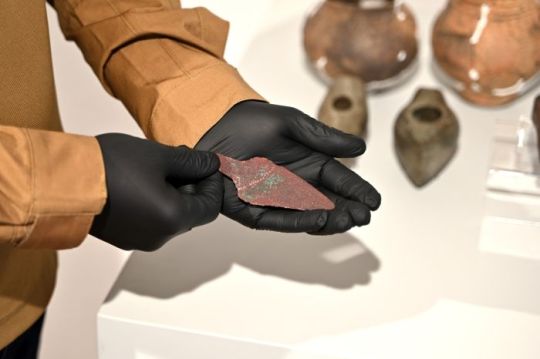
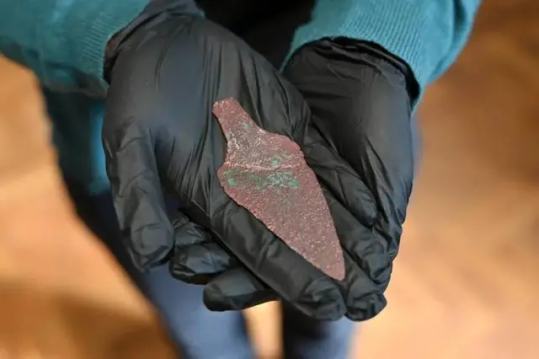
“In Polish lands, this is a period of enormous changes related to, among others, with a change in the main raw materials for the production of tools. Instead of flint tools commonly used in the Stone Age, more and more metal products appear, heralding the transition to the next period – the Bronze Age,” noted Dr. Burghardt.
In contrast, the now-discovered dagger from Korzenica – as noted by Dr Elżbieta Sieradzka-Burghardt, an archaeologist from the Jarosław museum – was not cast in bronze, but is made of copper.
“So it predates the development of bronze metallurgy,” the archaeologist noted. “In the third millennium BC, objects made of copper were extremely rare, so only people of the highest social status could afford them. There is rather no doubt that the dagger is not a local product,” Dr Burghardt-Sieradzka added.
During this period, metal products were imported from modern-day Ukraine or Hungary and only available to elites who could afford them. Links to the ancient weapon’s origin will be determined in the future through special metallurgical analysis.
By Leman Altuntaş.
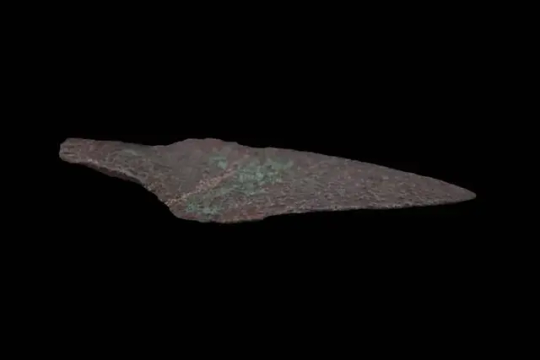
#A 4000-Year-Old Dagger Discovered in Poland#Jarosław#metal detecting#ancient artifacts#archeology#archeolgst#history#history news#ancient history#ancient culture#ancient civilizations
52 notes
·
View notes
Text
Online History Short-Courses offered by Universities Masterpost
Categories: Classical Studies, Egyptology, Medieval, Renaissance, The Americas, Asia, Other, Linguistics, Archaeology
How to get Coursera courses for free: There are several types of courses on Coursera, some will allow you to study the full course and only charge for the optional-certificate, for others you will need to audit it and you may have limited access (usually just to assignments), and thirdly some courses charge a monthly subscription in this case a 7 day free trial is available.
Classical Studies 🏛️🏺
At the Origins of the Mediterranean Civilization: Archeology of the City from the Levant to the West 3rd-1st millennium BC - Sapienza University of Rome
Greek and Roman Mythology - University of Pennsylvania
Health and Wellbeing in the Ancient World - Open University
Roman Architecture - Yale
Roman Art and Archeology - University of Arizona
Rome: A Virtual Tour of the Ancient City - University of Reading
The Ancient Greeks - Wesleyan University
The Changing Landscape of Ancient Rome. Archeology and History of Palatine Hill - Sapienza University of Rome
Uncovering Roman Britain in Old Museum Collections - University of Reading
Egyptology 𓂀⚱️
Egypt before and after pharaohs - Sapienza University of Rome
Introduction to Ancient Egypt and Its Civilization - University of Pennsylvania
Wonders of Ancient Egypt - University of Pennsylvania
Medieval 🗡️🏰
Age of Cathedrals - Yale
Coexistence in Medieval Spain: Jews, Christians, and Muslims - University of Colorado
Deciphering Secrets: The Illuminated Manuscripts of Medieval Europe - University of Colorado
Enlightening the Dark Ages: Early Medieval Archaeology in Italy - University of Padova
Lancaster Castle and Northern English History: The View from the Stronghold - Lancaster University
Magic in the Middle Ages - University of Barcelona
Old Norse Mythology in the Sources - University of Colorado Bolder
Preserving Norwegian Stave Churches - Norwegian University of Science and Technology
The Book of Kells: Exploring an Irish Medieval Masterpiece - Trinity College Dublin
The Cosmopolitan Medival Arabic World - University of Leiden
Renaissance ⚜️🃏
Black Tudors: The Untold Story
European Empires: An Introduction, 1400–1522 - University of Newcastle
The Mediterranean, a Space of Exchange (from Renaissance to Enlightenment) - University of Barcelona
The Life and Afterlife of Mary Queen of Scots - University of Glasgow
The Tudors - University of Roehampton London
The Americas 🪶🦙🛖
History of Slavery in the British Caribbean - University of Glasgow
Indigeneity as a Global Concept - University of Newcastle
Indigenous Canada - University of Alberta
Indigenous Religions & Ecology - Yale
Asia 🏯🛕
Contemporary India - University of Melbourne
Introduction to Korean Philosophy - Sung Kyun Kwan University
Japanese Culture Through Rare Books - University of Keio
Sino-Japanese Interactions Through Rare Books - University of Keio
The History and Culture of Chinese Silk - University for the Creative Arts
Travelling Books: History in Europe and Japan - University of Keio
Other
A Global History of Sex and Gender: Bodies and Power in the Modern World - University of Glasgow
A History of Royal Fashion - University of Glasgow
Anarchy in the UK: A History of Punk from 1976-78 - University of Reading
Biodiversity, Guardianship, and the Natural History of New Zealand: A Museum Perspective - Te Papa
Empire: the Controversies of British Imperialism - University of Exeter
Great South Land: Introducing Australian History - University of Newcastle
Indigeneity as a Global Concept - University of Newcastle
New Zealand History, Culture and Conflict: A Museum Perspective - Te Papa
Organising an Empire: The Assyrian Way - LMU Munich
Plagues, Witches, and War: The Worlds of Historical Fiction - University of Virginia
Russian History: from Lenin to Putin - University of California Santa Cruz
Linguistics 🗣️
Introduction to Comparative Indo-European Linguistics - University of Leiden - Coursera version
Miracles of Human Language: An Introduction to Linguistics - University of Leiden
Archeology 💀
Archeoastronomy - University of Milan
Archaeology and the Battle of Dunbar 1650 - Durham University
Archaeology: from Dig to Lab and Beyond - University of Reading
Archeology: Recovering the Humankind's Past and Saving the Universal Heritage - Sapienza University of Rome
Change of Era: The Origins of Christian Culture through the Lens of Archaeology - University of Padova
Endangered Archaeology: Using Remote Sensing to Protect Cultural Heritage - Universities of Durham, Leicester & Oxford
Enlightening the Dark Ages: Early Medieval Archaeology in Italy - University of Padova
Exploring Stone Age Archaeology: The Mysteries of Star Carr - University of York
Forensic Archaeology and Anthropology - Durham University
Roman Art and Archeology - University of Arizona
The Changing Landscape of Ancient Rome. Archeology and History of Palatine Hill - Sapienza University of Rome
#side note: most of the universities that offer courses in English on these sites are European or American(USA)#so the lack of courses about Asia (other than Japan) The Americas and Africa is not because of me#history#historical#classical studies#ancient Greece#ancient Rome#pompeii#Egyptology#pharaoh#ancient Egypt#medieval#medieval europe#Medieval Arabia#Renaissance#Tudor#the tudors#history courses#courses#linguistics#archeology#archeology courses#resources#free resources
178 notes
·
View notes
Photo

Archaic cities in the Middle East, 2900 BC.
by LegendesCarto
98 notes
·
View notes
Text

Gold pin, Greece, 3rd millennium BC
from The National Museum of Archaeology, Athens
138 notes
·
View notes
Text

Gold necklace, Georgia, 3rd millennium BC
from The Georgian National Museum
436 notes
·
View notes
Text


Two large painted pottery jars, Neolithic period, Majiayao culture, Banshan type, late 3rd millennium BC.
Courtesy Alain Truong
14 notes
·
View notes
Text
9 notes
·
View notes
Text

Chinese Neolithic axe (stone, Liangzhu Culture 4th to 3rd millennium BC)
The thick blade has rounded, curved edges and a hafting hole drilled from both sides.
image and adapted text from here
17 notes
·
View notes